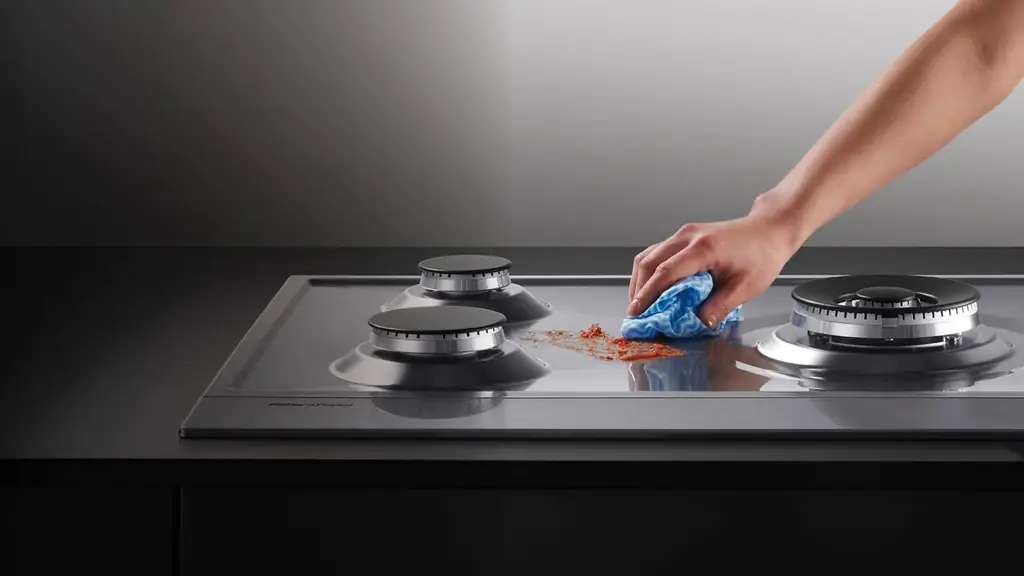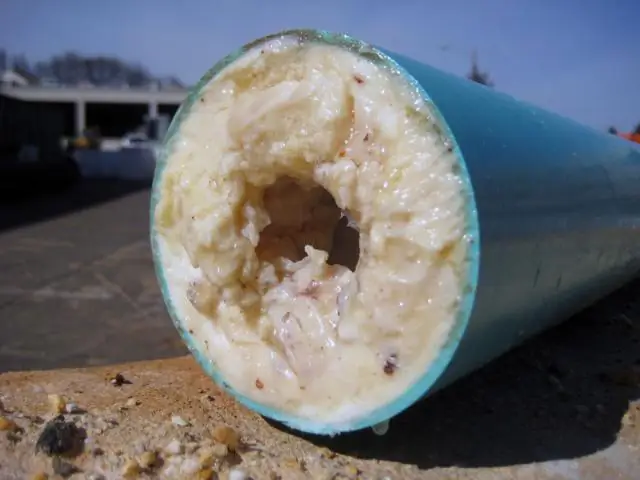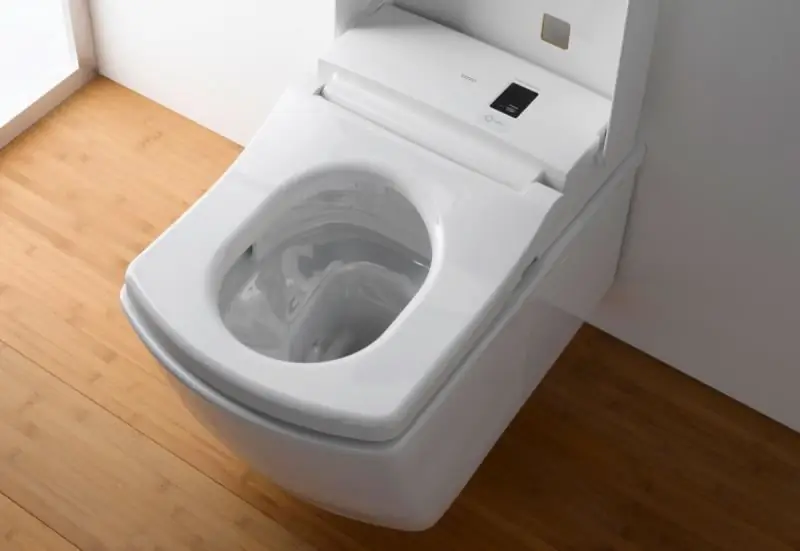
Table of contents:
- Author Bailey Albertson [email protected].
- Public 2023-12-17 12:53.
- Last modified 2025-01-23 12:41.
Heels, like a baby - get rid of rough skin on the feet

Delicate and smooth skin on the feet speaks of a person's well-groomed and neatness. But what if roughness appears constantly due to active work or just a love of walking? Do you really have to spend a lot of money on regular trips to the pedicure master? It is not at all necessary - now there are a lot of methods that allow you to make the legs soft on your own.
Content
-
1 How to exfoliate your heels
-
1.1 Cosmetics
- 1.1.1 Peeling socks
- 1.1.2 Peeling
- 1.1.3 Express softeners
- 1.2 Folk recipes
-
1.3 Machining
1.3.1 Video: Scholl file overview
-
- 2 What not to do with your heels
How to exfoliate your heels
To free the heels of rough skin, you can resort to:
- cosmetic "purchased" products. These include special peeling creams, exfoliating socks and express wipes. The advantages of such methods include ease of use, usually a pleasant aroma, rather high efficiency and an extremely low risk of an allergic reaction;
- folk recipes. Their main advantage is their low cost. You can exfoliate your skin with mixtures, all the ingredients for which you will probably find at home. However, traditional methods are not always effective, and can also cause an allergic reaction;
- mechanical processing. These include: pumice stone, special rollers and pedicure files. The advantages include simplicity and high efficiency, among the disadvantages - the skin is not always smooth, and the use will require physical effort. Erasing a lot of roughness with a pumice stone, you can simply get tired.
Cosmetics
Beauty products are perhaps the best option if you have the money and want to get to the nearest beauty store. The entire range of products can be divided into several large groups.
Peeling socks
They appeared on the shelves in Russian stores around 2010, but they have been used around the world since the last century.

Peeling socks are usually produced by Japanese and Korean companies, so it is best to look for them in Asian beauty stores
The essence of their work is simple:
- The user removes the sealed package, which contains a pair of socks made of a material resembling dense polyethylene. Inside these socks is an effective exfoliation agent.
- Then you need to put on these socks and secure them to your ankles using special adhesive strips that are located on the top of the sock.
- In this form, the user should be from an hour to two, depending on the instructions.
- Then the socks are removed, the feet are thoroughly washed.
- The effect usually appears after a few days. Coarse skin begins to flake off, like a dried callus.
My first acquaintance with peeling socks happened about a couple of years ago. I bought a package for the stock out of pure curiosity. I came home, put on socks and laughed for a long time - my legs looked like those of little Muk. Apparently, manufacturers expect that their product will be used by people with a foot size up to 45 - the socks were very large for me, I even had to tuck them up. For an hour and a half, I shuffled around the apartment in fear of slipping. The skin was a little hot, but there was no pain. Then I took off my socks and washed off the rest of the product. For three days I waited for the effect - nothing happened. On the fourth, I woke up, looked at my legs and was scared asleep - the skin on my heels hung down like old rags. For the next three days, the legs looked extremely frightening (fortunately it was winter), and then the renewal process ended,and I could enjoy the soft pink skin on my heels.
The main disadvantage of this method is that it is not suitable for sensitive skin, it can cause a burning sensation. Read the instructions for use carefully and observe the exposure time.

Expect to walk around with flaky skin for several days
The most popular socks that you can find in stores today are:
- Finefoot;
- Braphy;
- 4SKIN.
Peeling
You don't need to wear Asian socks for effective exfoliation. You can buy a ready-made mixture and apply it according to the instructions. The main disadvantage is that a systematic approach is needed to achieve a good effect.
The most popular products from Russian manufacturers are:
-
softening foot peeling "Agafia's Bath";

"Bathhouse Agafia" Agafya has several more peelings - "from corns" and "nutritious"
-
peeling for feet "Home recipes";

"Home recipes" Home Recipes has very convenient packaging in the form of a low jar
-
deodorizing peeling care Greeny "Tokyo".

Greeny After use, a pleasant aroma of green tea will remain
Many users note that the use of foot exfoliation allows not only softening the skin of the feet, but also getting rid of the problem of unpleasant odor.
Express softeners
The most popular example of such a product is the Domix Liquid Blade Wipes. The essence of the product is as follows - the package contains wet wipes impregnated with a powerful emollient composition. Its peculiarity is that it has a much better effect on coarse skin than on healthy skin. The napkin should be applied to the corns and held for several minutes. Then you can quickly and effectively walk with a pumice stone, pedicure trowel or roller.

Despite the creepy name, it is not necessary to go over the heels with a real blade
In addition to wipes, there are other forms of this product: sprays and liquid concentrates. But napkins are most convenient, since you still have to soak some cloth with liquid in order to apply the compress to the corns.
Folk recipes
Traditional methods can cause an allergic reaction, so before using any of these methods, it is worth checking the sensitivity of the skin. Apply the mixture you are going to use on the skin on the crook of the elbow and wait about 15 minutes. If there is no redness or itching, then the recipe can be used.
The ingredients for folk remedies are sure to be found in your home:
- hydrogen peroxide. Make a glass of the solution by diluting one part peroxide with six parts water. Make a gauze swab (you can use bandages for this purpose) and attach it to the corns. Once the compress is dry, make a new one. Work your leg in this way for five minutes. The corns should be soaked, after which it can be easily removed with a pumice stone or a pedicure trowel;
- soda. Make a foot bath and add 1 tablespoon of baking soda to 1 liter of water. Steam your legs in this way for fifteen minutes, and then mechanically remove the rough skin;
- potatoes. Boil three large, skinless potatoes. Save the resulting broth, wait for it to cool slightly to an acceptable temperature and steam your legs in it. Then work your heels with a pumice stone or pedicure trowel.
Mechanical restoration
One of the easiest ways to remove corns and rough skin is to use mechanical treatment with:
-
ordinary pumice. Its main advantage is its cheapness. She well removes large corns and very coarse skin, but she is not able to bring the feet to the state of "heel like a baby";

Pumice Real pumice (and there are not many of them in stores) is volcanic glass; however, artificial analogues in terms of the ability to remove corns are usually no worse
-
pedicure grater. This thing can cost from 400 rubles or more, but it is worth buying it if you want to maintain smooth feet at home. It is important to choose the appropriate grit - the rougher your skin, the coarser the sandpaper should be. Very handy devices - double-sided graters with different grain sizes. The large one is suitable for erasing roughness, and the small one is suitable for grinding and making it smooth and soft;

Pedicure grater A pedicure grater is an ordinary sandpaper with a handle, but how much use can it bring
-
roller saw Scholl. Its main advantage in automatic rotation is that it significantly reduces the physical effort required to remove roughness. Together with the file, the manufacturer offers rollers (including removable ones, they are sold separately) with diamond crystals, which, due to their hardness, should more effectively remove rough skin. The opinions of users, however, diverged - someone liked the device, and someone noted that the videos are no better than a regular pedicure grater.

Roller saw Scholl Scholl is a handy roller file that makes daily foot care easier
The main disadvantage of this approach is the need for physical effort. You will have to sit and rub, using force, your heels for ten or even twenty minutes. If you are ready for such hard work, then let's get started:
- The first step is to steam your legs. To do this, you can use an express softener (for example, "Liquid Blade", which was discussed above) or take a ten-minute foot bath. To make the procedure even more effective, add bath salt to the basin.
- Dry one leg with a towel and start processing. Don't rub too quickly. Slowly move the pumice stone, grater, or roller, pressing it against your skin with moderate force. If painful sensations appear, stop treating this area. This means that you have already reached healthy pink skin, it should not be rubbed.
- After treating the leg, rinse it to remove the remnants of the removed skin, and then lubricate with a moisturizing and nourishing cream.
- Treat the second foot in the same way.
Please note that you cannot remove old corns in one go. You will most likely need to do these steps every night for a week to achieve soft, beautiful skin on your feet. And then remember to treat your heels every two to three days to prevent the roughness from returning.
Video: Scholl file review
What not to do with your heels
If your goal is to make the skin soft and smooth, and not injure it and achieve the opposite effect, never resort to the following methods:
- shave off corns. You run the risk of damaging not only rough, but also "good" skin. Moreover, the cut skin quickly returns, and the corns layer can become even thicker;
- soften the heels and cut off excess skin with nail scissors. The risk is the same as a razor. In addition, you will not get smooth skin, but rather uneven scissor notches all over the heel;
- make lotions from vinegar. This method suggests using undiluted table vinegar, which will of course soften rough skin, but can leave irritation and red spots. Better to resort to less radical methods - a regular salt bath is no worse.
You can make the skin of your feet beautiful and well-groomed even if you don't use the services of a pedicure master. With patience and perseverance, you'll soon be showing off smooth pink heels.
Recommended:
How To Clean A Gas Stove (grate, Burners, Pens, Etc.) With Folk Remedies (soda, Ammonia) And Not Only

Practical advice on cleaning a gas stove from grease and dirt. Folk remedies for cleaning surfaces, handles, burners and oven
Blockage In Pipes: Elimination At Home, How To Clean The Sewer, The Use Of Folk Remedies

Causes of blockage in pipes, ways to eliminate it, prevention tips and a video with a test of the effectiveness of ways to clean the sewer at home
How To Clean The Toilet From Urinary Stones At Home, How Can You Remove Plaque Inside (including Using Folk Remedies)

Where urinary calculus forms, the most effective ways to clean it from the toilet at home, photos, videos and tips for preventing the formation of growths
How Many Teeth An Adult Cat And A Cat Have, How To Clean Them At Home, Including How To Clean Them From Tartar Formation

Milk and molar teeth in cats, how many there are. How to brush your cat's teeth. Brushes and toothpastes for cats. Causes of tartar. Cleaning the oral cavity from the stone
How To Clean The Chimney From Soot, Including Folk Remedies, As Well As A Cleaning Tool

How to clean a chimney without the help of a chimney sweep with your own hands. What materials to choose. What are chemical and folk methods for cleaning the chimney from carbon deposits
